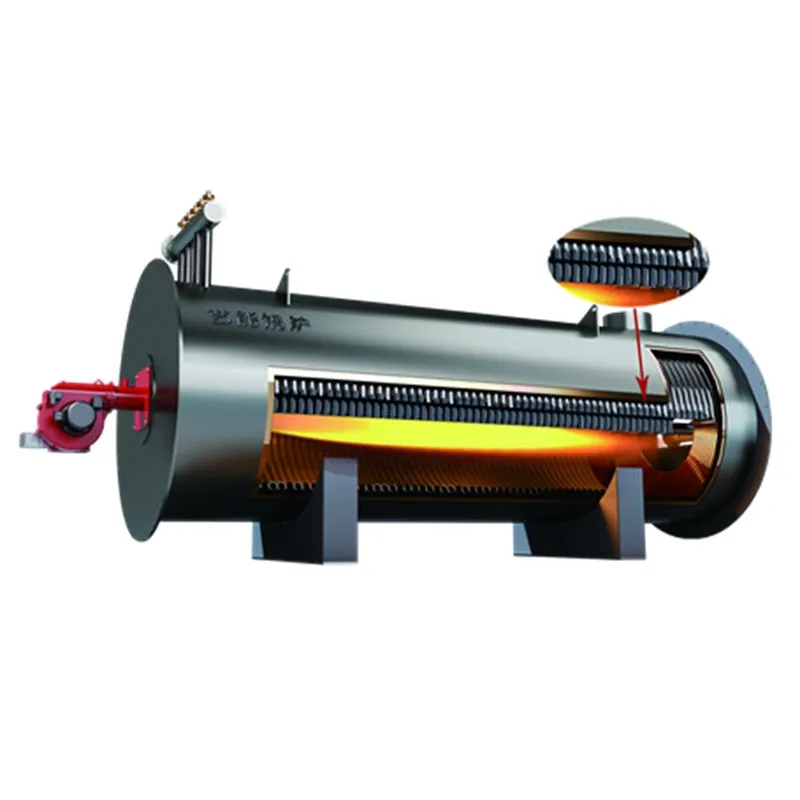Vertical Steam Boiler Design and Efficiency for Industrial Applications
Understanding Vertical Steam Boilers Features and Benefits
In industrial applications, steam plays a crucial role in various processes, from heating to power generation. Among the different types of steam boilers, vertical steam boilers are increasingly popular due to their unique design and operational efficiency. This article provides an overview of vertical steam boilers, focusing on their features, advantages, and applications.
What is a Vertical Steam Boiler?
A vertical steam boiler is a type of boiler where the orientation of the steam drum is vertical rather than horizontal. This design influences not only the physical dimensions of the boiler but also its operational efficiencies, maintenance ease, and overall performance. Vertical steam boilers typically have a compact structure, making them ideal for applications where space is at a premium.
Key Features of Vertical Steam Boilers
1. Compact Design The vertical configuration allows for a smaller footprint, making these boilers suitable for facilities with limited space. Their tall and narrow structure means they can often be installed in tight areas where horizontal units would not fit.
2. High Efficiency Vertical steam boilers are designed to optimize heat transfer, thereby maximizing efficiency. The design allows for faster heating times and reduced fuel consumption, contributing to lower operating costs.
3. Quick Start-Up These boilers can reach full steam pressure in a relatively short time compared to other types. This feature is beneficial in industries where quick response times are critical, such as food processing and chemical manufacturing.
4. Minimal Maintenance The vertical design simplifies maintenance tasks. With fewer components than many horizontal boilers, there is less that can go wrong, leading to reduced downtime and maintenance costs.
5. Robust Construction Many vertical steam boilers are built with high-quality materials that can withstand high pressures and temperatures. This durability ensures a long service life and reliability in demanding operational environments.
Advantages of Vertical Steam Boilers
vertical steam boiler

1. Space Efficiency In many industrial settings, floor space can be limited. The vertical design minimizes the amount of space needed, allowing businesses to utilize their facilities more effectively.
2. Lower Water Content Vertical steam boilers typically have less water content than traditional boilers. This characteristic allows them to respond more swiftly to changes in steam demand, which is especially useful in fluctuating production environments.
3. Environmental Benefits Increased efficiency means that vertical steam boilers can help reduce greenhouse gas emissions. Additionally, many modern units are designed to integrate with environmentally friendly solutions, such as condensing technologies and low-NOx burners.
4. Safety Features Most vertical steam boilers come equipped with advanced safety features, including pressure relief valves, automatic water level controls, and flame detection systems. These contribute to safer operation and help mitigate potential risks associated with steam generation.
5. Versatility Vertical steam boilers can be used in various applications, including laundry services, food and beverage production, pharmaceuticals, and HVAC systems. Their adaptable design allows them to meet specific steam generation needs across different sectors.
Applications of Vertical Steam Boilers
Vertical steam boilers serve a diverse range of industries. In the manufacturing sector, they are used for powering equipment and processes requiring steam at varying pressures. In hospitality and laundry services, these boilers are essential for producing reliable hot water and steam required for cleaning and ironing.
The food and beverage industry also greatly benefits from these boilers, especially in processes such as pasteurization and sterilization. Furthermore, their compact size and efficiency make them an excellent choice for smaller facilities that may not require large steam output.
Conclusion
Vertical steam boilers represent a highly efficient and versatile solution for various industrial applications. Their compact design, ease of maintenance, and robust performance make them an attractive option for businesses looking to enhance their operational efficiency. As industries continue to focus on sustainability and cost-effectiveness, the popularity of vertical steam boilers is likely to grow, establishing them as a reliable choice for steam generation needs. Whether in food production or chemical processing, these boilers offer the benefits of space-saving design and increased efficiency, making them a vital component in modern industrial applications.
-
Top Electric Steam Boiler Makers | AI-OptimizedNewsJul.31,2025
-
Top Electric Steam Boiler Manufacturers - High Efficiency SolutionsNewsJul.30,2025
-
Top Electric Steam Boiler Manufacturers – Efficient Industrial SolutionsNewsJul.29,2025
-
Top Electric Steam Boiler Manufacturers | Reliable Industrial SolutionsNewsJul.29,2025
-
OEM Steam Boiler Solutions for Custom Needs | High Efficiency & VersatilityNewsJul.29,2025
-
High-Efficiency Thermal Oil Boiler for Industrial Heating SolutionsNewsJul.29,2025

